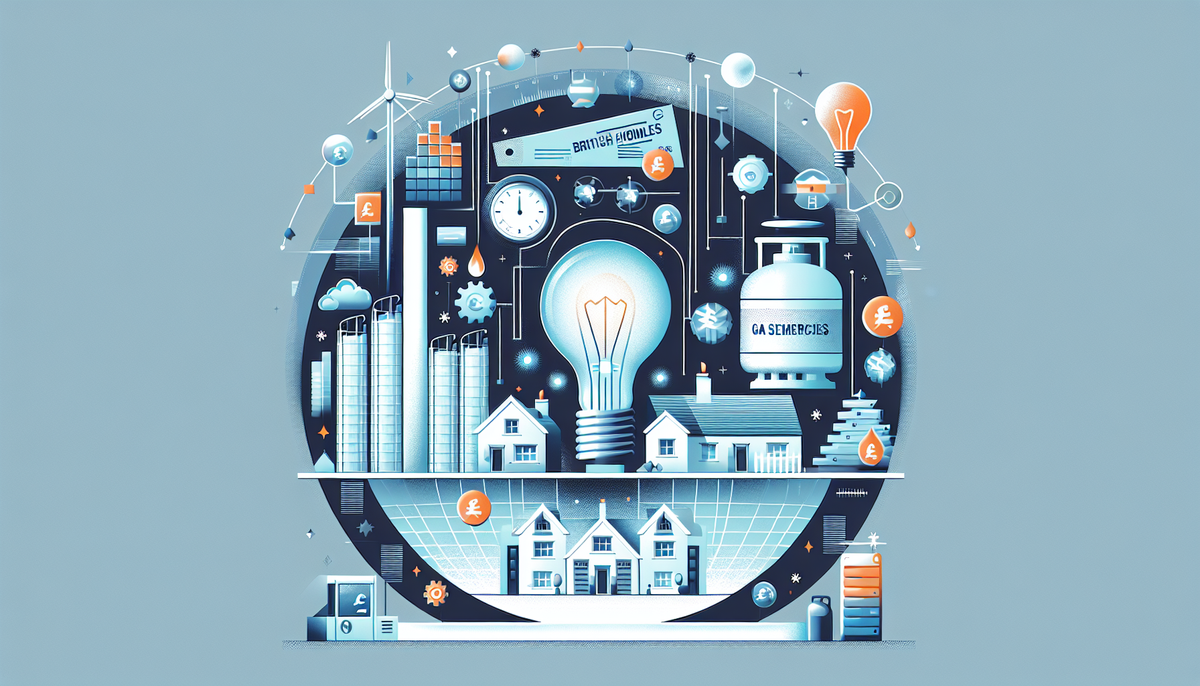Will 5% Energy Bill Hike Disrupt UK Households?

Understanding the 5% Energy Bill Hike
The recent forecast predicting a nearly 5% increase in energy bills across Great Britain has sparked widespread concern among households, businesses, and policymakers. With rising costs set to push the average annual bill to approximately £1,823 from April, this change represents more than just a minor adjustment in domestic expenses—it signals a potential shift in the broader economic landscape.
The Catalyst: Declining Gas Storage Levels
Recent analysis by Cornwall Insight reveals that Europe’s gas storage levels have significantly declined, a factor that has led to the upward revision of energy pricing forecasts. The dwindling reserves, combined with colder weather and lower renewables output, have forced energy regulators to reconsider the price cap for gas and electricity. Consequently, the new pricing puts considerable pressure on households, especially those on variable tariffs.
Economic and Market Implications
The projected energy price rise is not an isolated event—it is intertwined with several broader market trends that affect both consumers and businesses. Here are some key economic implications:
- Household Budget Pressure: With the average household bill inching closer to £1,823 per year, families are likely to tighten their budgets, impacting discretionary spending and overall consumption.
- Inflationary Pressures: Rising energy costs add to the cost-of-living crisis, potentially fuelling inflation as businesses pass on higher operational costs to consumers.
- Market Uncertainty: The volatility in global gas markets, influenced by geopolitical tensions and fluctuating production levels, could lead to further instability in energy pricing.
- Corporate Strategy Shifts: Businesses may need to reassess their operational costs and consider investing in energy-efficient technologies or renewable energy sources to counterbalance the impact of rising energy prices.
Broader Trends Impacting Corporate and Financial Sectors
This energy bill increase comes at a time when market trends are rapidly evolving. For professionals, investors, and business leaders, the following areas are key to watch:
- Sustainability and ESG Investing: With energy costs rising, both public and private sectors are increasingly prioritizing sustainable practices. Investors are slowly shifting their focus towards companies that demonstrate robust environmental, social, and governance (ESG) practices.
- Fintech and Consumer Finance: As households face tighter budgets, fintech companies are emerging with innovative solutions to help consumers manage their spending and reduce wasteful energy consumption.
- Corporate Adaptation Strategies: Companies are actively exploring methods to mitigate energy costs. These include technological upgrades, enhanced energy management systems, and strategic partnerships focused on renewable energy investments.
The Role of Policy and Regulation
Government intervention plays a crucial role in stabilizing energy markets and protecting consumers. Ed Miliband’s recent call for swift measures to ease the burden on households underlines the importance of proactive policy. Notable areas of focus include:
- Accelerated Renewable Energy Rollout: A faster transition to renewable energy sources may help reduce dependency on fossil fuels and alleviate future supply constraints.
- Enhanced Regulatory Measures: Ofgem and other regulatory bodies are being urged to implement additional safeguards and support mechanisms to cushion vulnerable households from drastic price hikes.
- Energy Efficiency Initiatives: Programs aimed at upgrading home insulation and promoting energy-efficient appliances could be instrumental in reducing overall consumption and mitigating cost increases.
Case Studies and Expert Insights
Recent case studies from various sectors have highlighted the divergent impacts of rising energy costs. For instance, a major British energy supplier recently announced a £300M capital injection aimed at offsetting operational costs, while consumer advocates like Greenpeace stress the necessity for long-term solutions like better-insulated homes and renewable heat pumps.
Experts point out that the current trajectory of energy prices could be a precursor to deeper economic shifts. The interplay between energy costs and household finances has broad implications for consumer confidence, inflation rates, and even the stock market. By understanding these dynamics, businesses can better prepare for potential disruptions and identify new investment opportunities that capitalize on the emergent market trends.
Strategies for Consumers and Businesses
In light of these developments, strategic planning and effective energy management become vital. Below are recommended strategies for different stakeholders:
For Consumers
- Energy Audits: Conduct regular energy audits to identify areas of improvement and reduce wastage.
- Financial Planning: Revisit household budgets and consider long-term saving mechanisms to mitigate the impact of rising expenses.
- Invest in Efficiency: Explore government-backed incentives for upgrading insulation or switching to energy-efficient appliances.
For Businesses
- Cost Management: Review and optimize operational expenses with a focus on energy consumption and sourcing.
- Innovative Financing: Leverage fintech solutions to secure funding for energy efficiency projects, which can reduce long-term expenses and environmental impact.
- Strategic Investments: Consider diversifying energy sources by investing in renewable technologies and storage solutions to buffer against market volatility.
Adapting to a New Energy Landscape
The current forecast for rising energy bills is a microcosm of larger, systemic changes affecting economies around the globe. As household energy rates continue to rise, both policy makers and business leaders face the challenge of steering their economies through uncertain times. The emphasis on upgrading energy infrastructure and embracing green technologies is not merely a reactive measure but a strategic imperative for fostering long-term economic resilience.
Looking Ahead: Future Trends and Challenges
While the current focus is on managing the immediate impact of a 5% price increase, the broader trends in energy supply and demand are likely to intensify in the coming years. Key areas that warrant continued attention include:
- Global Energy Security: The end of major gas transit deals and geopolitical shifts continue to underscore the need for diversified energy sources.
- Technological Disruptions: Breakthroughs in renewable energy technologies and smart grid infrastructures will play a pivotal role in determining future market stability.
- Economic Policy Innovations: Governments and regulatory bodies must collaborate closely with the private sector to implement policies that safeguard the interests of consumers while fostering a competitive market environment.
Concluding Thoughts
In summary, the anticipated rise in energy bills by nearly 5% in Great Britain is a multifaceted issue that touches upon household finance, corporate strategies, and broader market dynamics. As energy storage concerns merge with global economic trends, both consumers and businesses must adopt a proactive approach to mitigate risks and capitalize on emerging opportunities.
Staying informed and agile will be key in navigating this evolving energy landscape. Whether through policy reforms, technological innovations, or sound personal finance strategies, the collective response to rising energy costs will significantly shape the economic outlook for the years ahead.
The dialogue between energy regulators, government officials, industry stakeholders, and the general public is more critical than ever. By examining the detailed dynamics outlined in this article, readers can gain a comprehensive understanding of how a seemingly technical adjustment—the energy price cap—can have far-reaching implications on economic stability and consumer wellbeing.
This in-depth analysis aims to provide clarity amidst uncertainty, offering valuable insights and actionable strategies for everyone affected by these changes. As the energy market continues to evolve, staying ahead of the curve will require not only awareness but also a willingness to adapt and innovate.



Comments ()